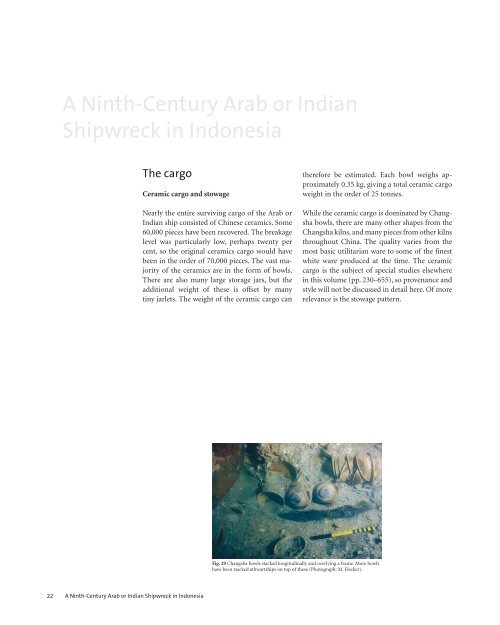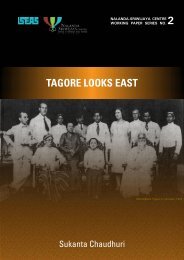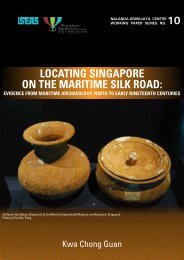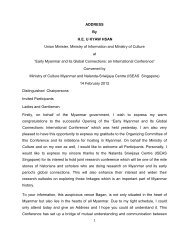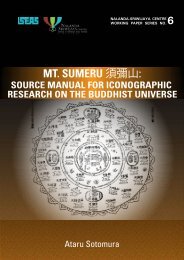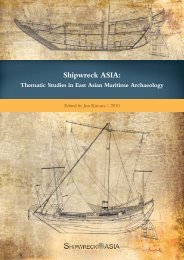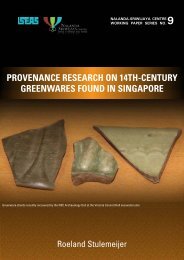You also want an ePaper? Increase the reach of your titles
YUMPU automatically turns print PDFs into web optimized ePapers that Google loves.
A Ninth-Century Arab or Indian<br />
Shipwreck in Indonesia<br />
The cargo<br />
Ceramic cargo and stowage<br />
Nearly the entire surviving cargo of the Arab or<br />
Indian ship consisted of Chinese ceramics. Some<br />
60,000 pieces have been recovered. The breakage<br />
level was particularly low, perhaps twenty per<br />
cent, so the original ceramics cargo would have<br />
been in the order of 70,000 pieces. The vast majority<br />
of the ceramics are in the form of bowls.<br />
There are also many large storage jars, but the<br />
additional weight of these is offset by many<br />
tiny jarlets. The weight of the ceramic cargo can<br />
therefore be estimated. Each bowl weighs approximately<br />
0.35 kg, giving a total ceramic cargo<br />
weight in the order of 25 tonnes.<br />
While the ceramic cargo is dominated by Changsha<br />
bowls, there are many other shapes from the<br />
Changsha kilns, and many pieces from other kilns<br />
throughout China. The quality varies from the<br />
most basic utilitarian ware to some of the finest<br />
white ware produced at the time. The ceramic<br />
cargo is the subject of special studies elsewhere<br />
in this volume (pp. 230–655), so provenance and<br />
style will not be discussed in detail here. Of more<br />
relevance is the stowage pattern.<br />
Fig. 29 Changsha bowls stacked longitudinally and overlying a frame. More bowls<br />
have been stacked athwartships on top of these (Photograph: M. <strong>Flecker</strong>).<br />
22 A Ninth-Century Arab or Indian Shipwreck in Indonesia


